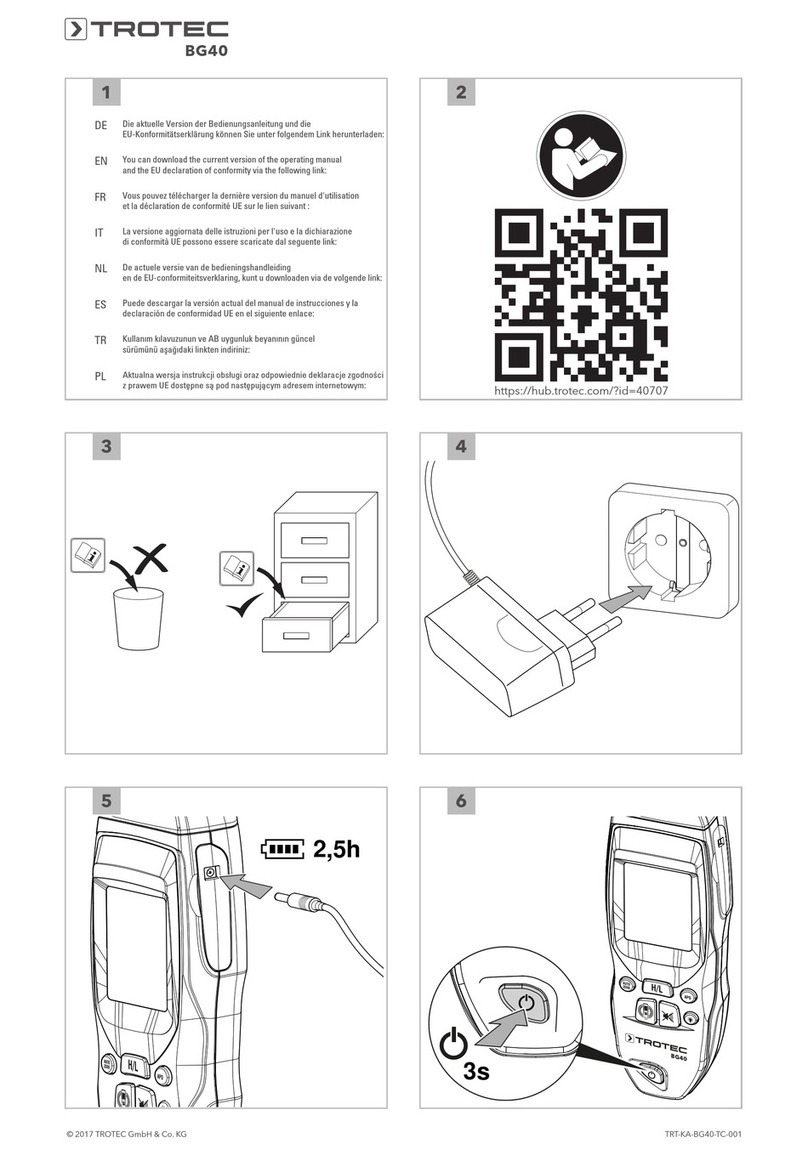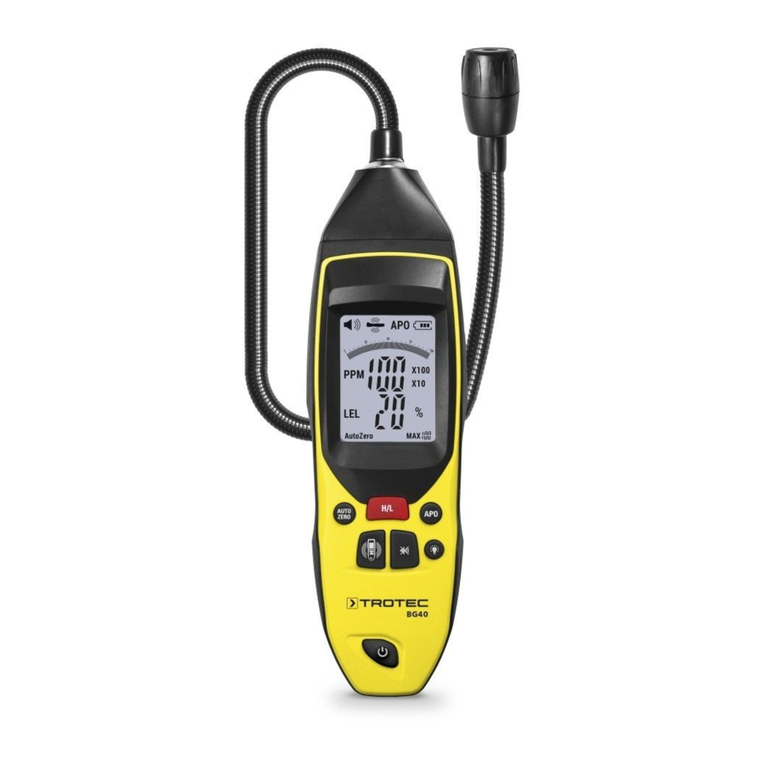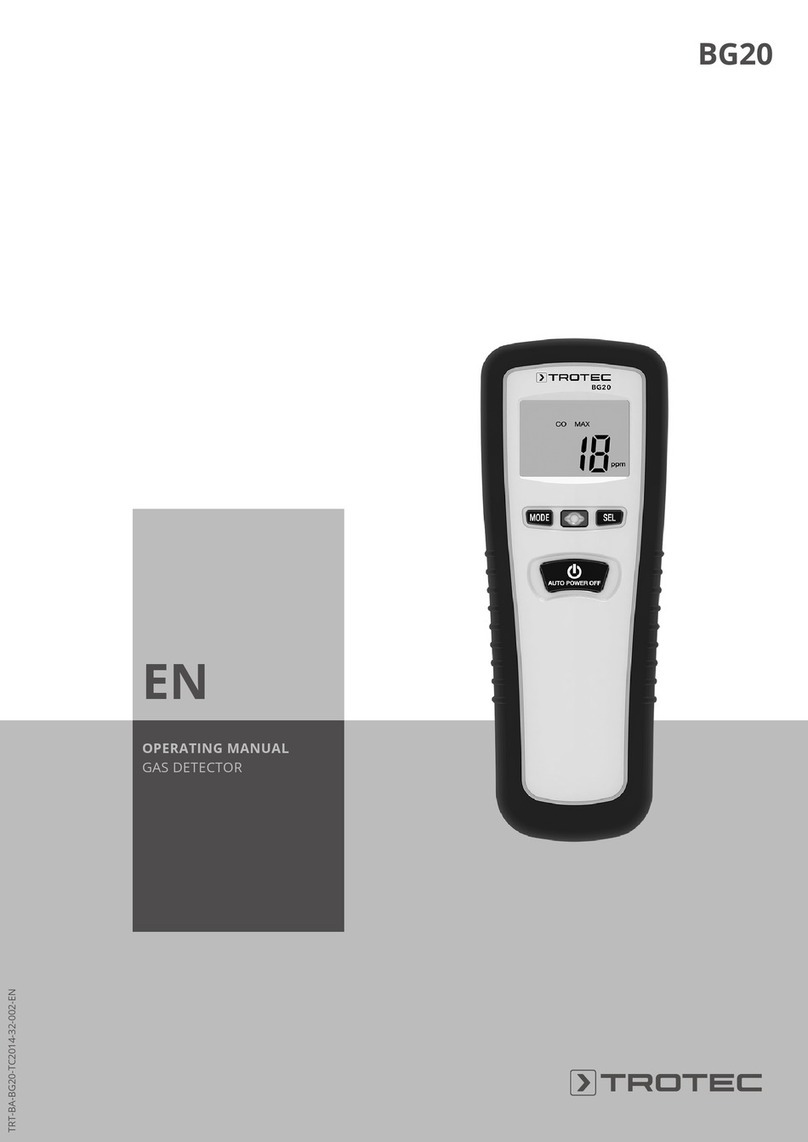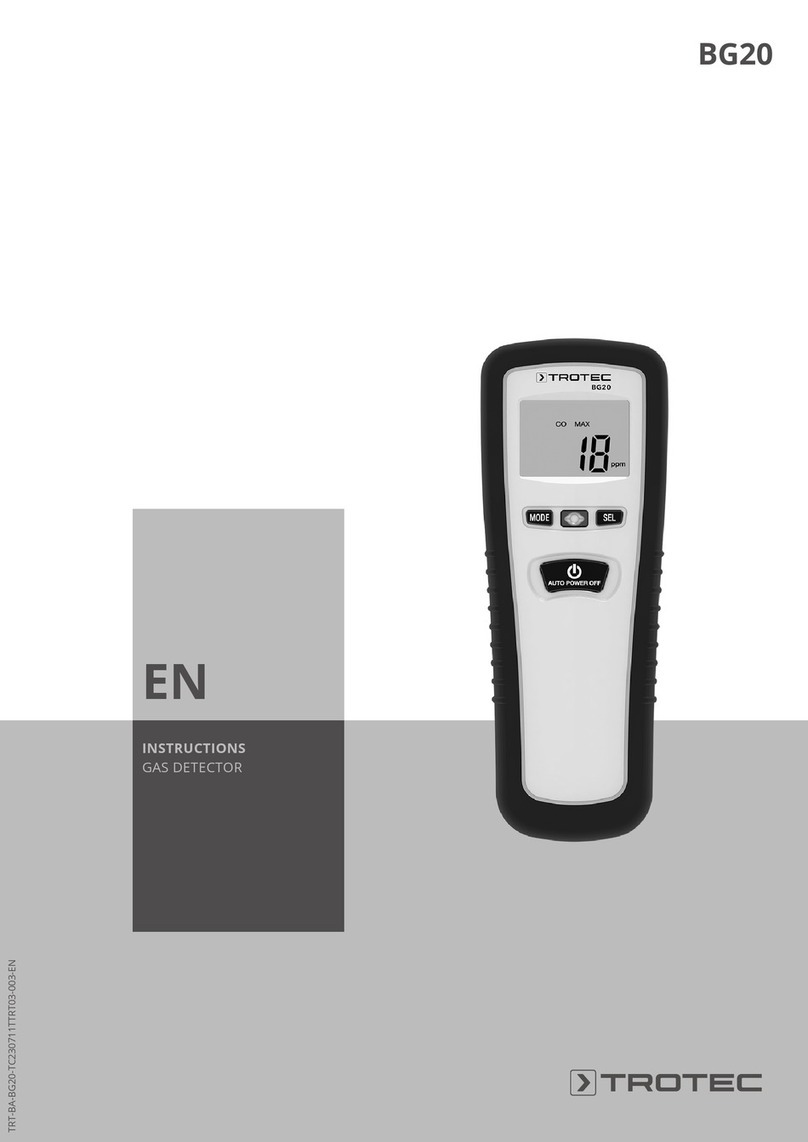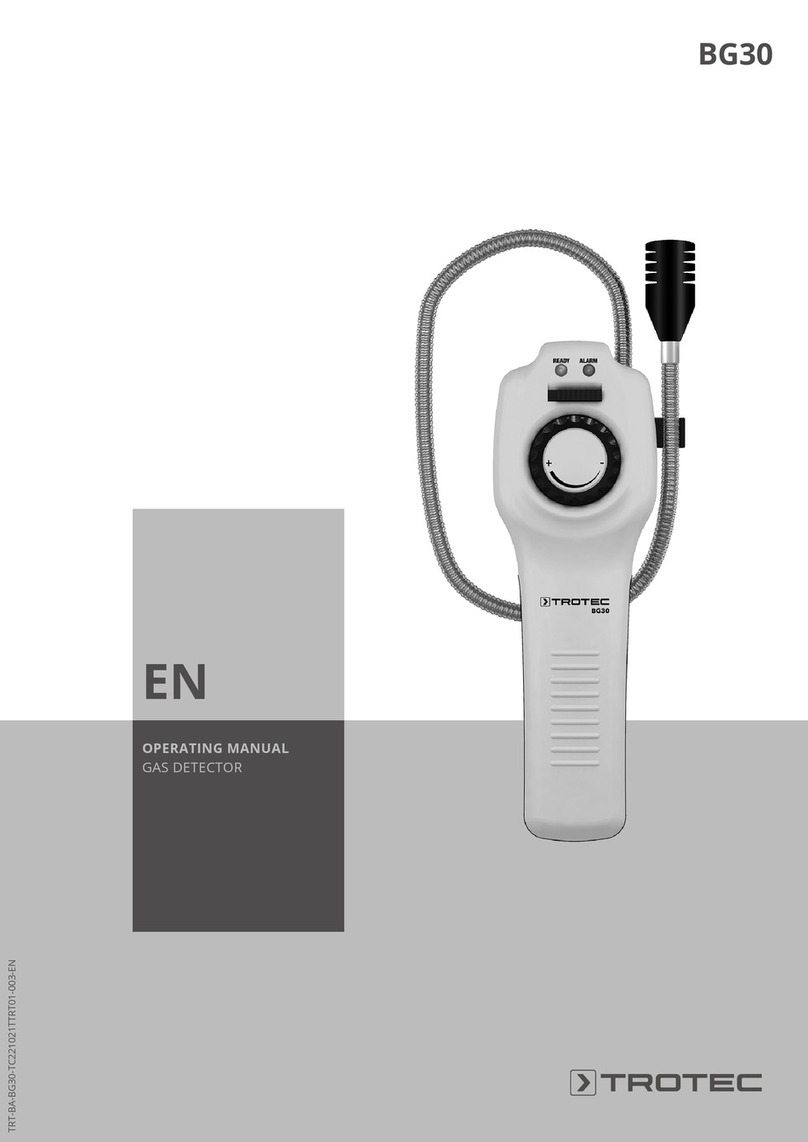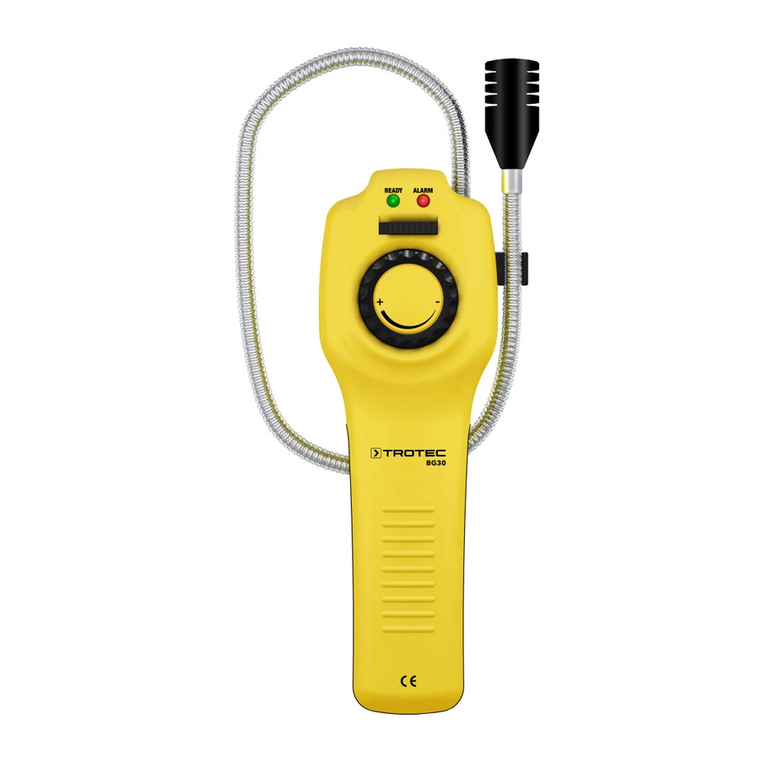
C - 1Notice d’emploi – Détecteur de gaz BG 30
Sommaire
01. Consignes de sécurité . . . . . . . . . . . . . . . . . . . C - 1
02. Domaine d’utilisation . . . . . . . . . . . . . . . . . . . . . C - 2
03. Description de l’appareil . . . . . . . . . . . . . . . . . . C - 2
04. Utilisation . . . . . . . . . . . . . . . . . . . . . . . . . . . . . . C - 3
05. Remplacement des piles . . . . . . . . . . . . . . . . . . C - 3
06. Entretien et nettoyage . . . . . . . . . . . . . . . . . . . C - 4
07. Caractéristiques techniques . . . . . . . . . . . . . . . C - 4
La présente publication annule et remplace toutes les versions précédentes. Aucune
partie de la présente publication ne peut être reproduite ou traitée, polycopiée ou dif-
fusée à l‘aide de systèmes électroniques sous quelque forme que ce soit sans notre
autorisation écrite. Sous réserve de modifications techniques. Tous droits réservés. Les
noms de produits sont utilisés sans la garantie de la libre utilisation et essentiellement
selon l’orthographe utilisée par le fabricant. Les noms de produits utilisés sont enregistrés
et doivent être considérés comme noms de marques. Sous réserve de modifications de
construction réalisées dans l’intérêt de l’amélioration constante des produits, ainsi que
de modifications de forme et de couleur. Le contenu de la livraison peut différer des
illustrations du produit. Le présent document a été réalisé avec le soin nécessaire. Nous
n’assumons aucune responsabilité quant aux erreurs ou omissions. © TROTEC®
01. Consignes de sécurité
Lisez soigneusement la présente notice d’emploi avant la mise
en service / l’utilisation de l’appareil ; conservez-la toujours à
proximité immédiate du lieu d’utilisation ou sur l’appareil lui-
même ! L’appareil a subi des contrôles étendus du matériel, du
fonctionnement et de la qualité avant sa livraison. Néanmoins, il
peut présenter des risques s’il est utilisé de façon inappropriée
ou non conforme par des personnes non formées !
Respectez les consignes ci-dessous
• En cas de dommages dus au non-respect de la présente notice
d’emploi, tout droit à la garantie est annulé ! Nous déclinons
toute responsabilité pour des dommages consécutifs !
• Nous déclinons toute responsabilité en cas de dommages
corporels ou matériels dus à une utilisation non conforme ou
au non respect des consignes de sécurité ! Dans de tels cas,
tout droit à la garantie est annulé. Les modifications de
l’appareil sont interdites.
• Veillez à une mise en service adéquate de l’appareil. Reportez-
vous à ce sujet à la présente notice d’emploi.
• En dehors de l’ouverture du cache du compartiment à piles,
l’appareil ne doit pas être désassemblé.
• Les appareils de mesure ne sont pas des jouets et doivent être
tenus à l’écart des enfants !
• Dans les locaux professionnels, il faut observer les instructions
pour la prévention des accidents émises par les associations
professionnelles exerçant dans le domaine des installations
électriques et de l’outillage industriel.
• Dans les écoles et institutions de formation, les ateliers de
loisirs et les garages en libre-service, l’utilisation des ap-
pareils de mesure doit être surveillée par un personnel res
ponsable, spécialement formé à cet effet.





